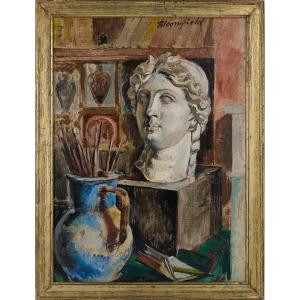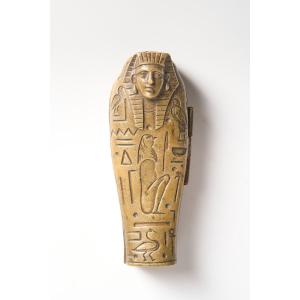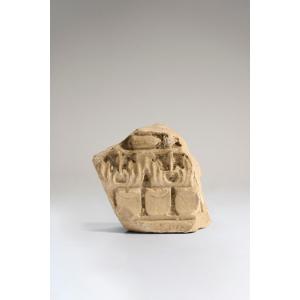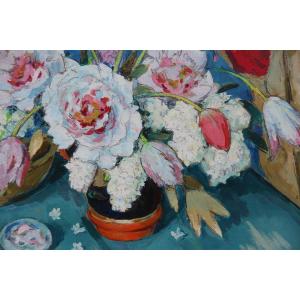The composition is centered on an antique bust, likely made of plaster, which rests on a cubic base and immediately captures the attention with its lighting and dominant position.
Around it are arranged a vase filled with brushes, an open notebook, and some pencils, directly evoking the world of the painter or sculptor. The background shows the sketch of a painting representing antique vases, painted more freely, in a muted palette that contrasts with the objects in the foreground.
The whole is constructed with a certain geometric rigor, alternating flat surfaces and rounded volumes. The pictorial treatment makes use of visible brushstrokes, precise modeling on the main objects, and a lateral light that structures the space without excessive dramatization.
This is not a decorative still life, but rather a methodical study of forms, materials, and artistic references, revealing the artist's workspace as a place of visual reflection.
Harry Bloomfield was a British painter active in the 20th century, primarily known for his figurative works and still lifes.
Although his reputation remains relatively discreet in the general history of modern art, he left behind a coherent and technically mastered output, often centered on studio themes, symbolic objects of artistic creation, or classically inspired motifs. His style combines a certain academic rigor in construction with a freedom of touch in his painting.





























 Le Magazine de PROANTIC
Le Magazine de PROANTIC TRÉSORS Magazine
TRÉSORS Magazine Rivista Artiquariato
Rivista Artiquariato